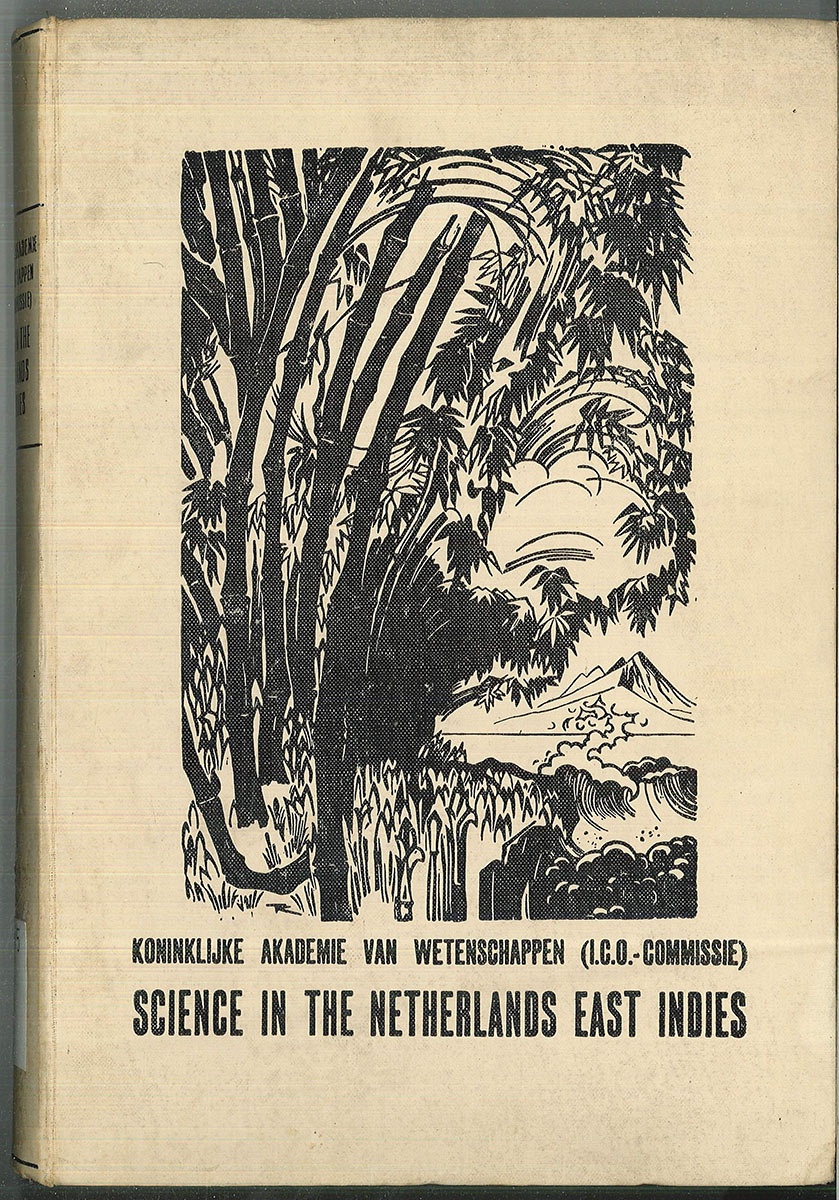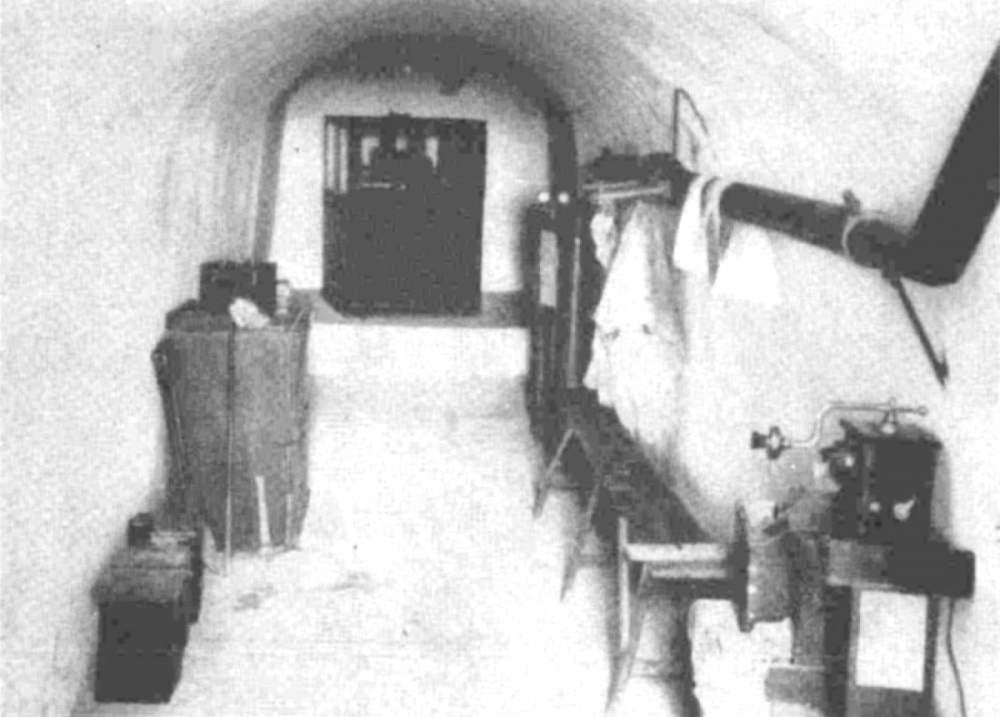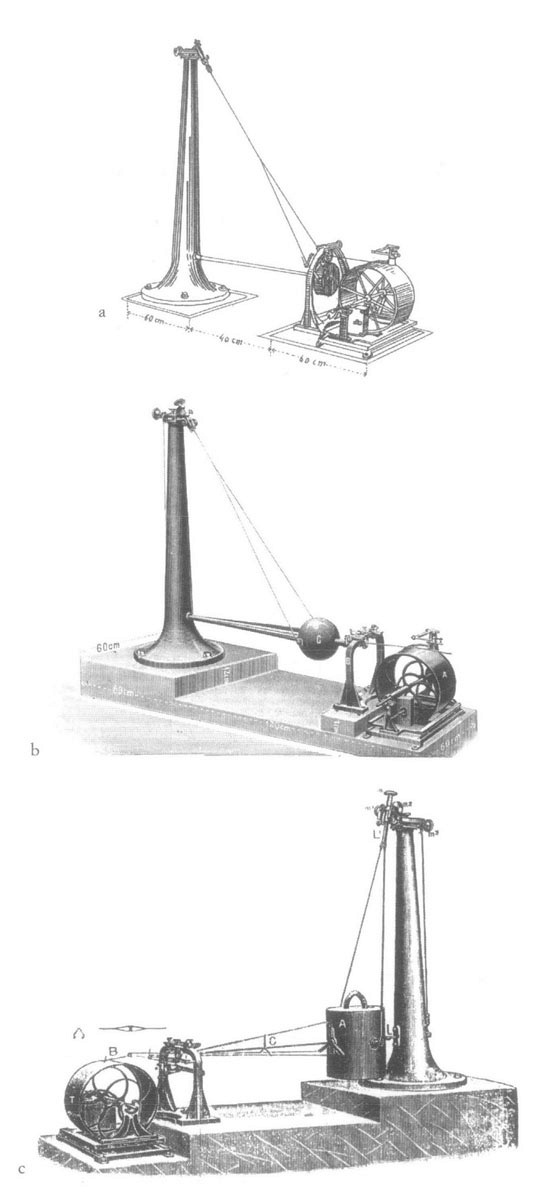Getting to Know a Few Hundred Degrees: Or, Volcano Aesthetics
By
Adam Bobbette
Understanding is primarily futural.
—Martin Heidegger
In preparation for the Fourth Pacific Science Congress in Bandung in 1929, colonial scientists compiled a compendium of scientific knowledge produced in the Dutch East Indies (today’s Indonesia) for their international colleagues. The book’s pithy title was Science in the Netherlands East Indies. It was equal parts summary, report card, case history and a handsome hardcover book. On its front cover was an art deco rendering of an Indies landscape with a volcano. Sections offered typical encyclopedic-style introductions to the geographic, ethnic, linguistic, and biological layers of the place. Its more advanced sections included summaries of scientific farming methods and struggles with “Sereh” disease in sugarcane crops, then threatening to devastate the entire plantation system, and by extension the whole Indies economy. This detailed picture was produced at the twilight of the colonial project. In little more than a decade the Dutch East Indies would no longer exist. At the time of the congress though, they were struggling to stay put amidst the growing sense they should pack it all up and head home.
The landscape painting on the cover was a way of staying put. It was a way to hold onto the landscape tightly, clasped under an arm, to pass it around, to talk about it, to point at it. The landscape too was a medium for staying put. Painted and pictured but also lived with, boots on the ground and heels dug in.
The East Indies was Happy Land.1See Rudolf Mrázek’s incredible, sensitive, and wandering: Engineers of Happy Land: Technology and Nationalism in a Colony (Princeton: Princeton University Press, 2002). Sedate natives, slow thick breezes, carriage rides. And like many similar colonial scenes across the world: there was also vital ambivalence. That same happy landscape tenderly held under an arm, soaked in from trolley and train window, and viewed from a vacation veranda, also seemed to want to reject them. It seemed to retreat and withhold itself while welcoming them. The more it was explicated by science, and the deeper they became embedded in it, the more it withdrew.
One of the intriguing contributions to Science in the Netherlands East Indies came from N. Wing Easton, charged with summarizing the state of volcanic science in the colony. He wrote it like a diplomat arriving at the congress with a bunch of beautiful but rebellious volcanoes. He asks: How have we come to live with these things? They are changing all the time and refuse to let us know them, they kill us when we get too close. How do we make peace with these things that we cannot get away from? We are in each other’s lives now, so how do we cohabitate with that which is unlivable and rejects us?
Java was changing. Its population, which lived in close proximity to volcanoes, was rapidly increasing. By 1900 its population of roughly 41 million people (in an area approximately the size of England) were close to thirty potentially active volcanoes. The cross-Java railroad had recently been completed, cutting across volatile slopes. The vast plantations that made it a farm for the Netherlands also expanded upwards. Amidst this deepened occupation of the landscape and its increasing vulnerability, scientists began to ask: Can we predict eruptions? Can we futurize our understanding?
Previously, scientists, engineers, and explorers had been primarily concerned with what happened during eruptions: the ash, how lava moved, what it looked like, what lived on their flanks. In short, their morphology. But by the turn of the century scientists shifted their attention to prediction. This was a new endeavor that had to be devised. Wing Easton started describing volcanoes in terms of their “emanations”: they were masses of fuming, expulsing, leaking signs that if deciphered would tell us what was happening inside. They would show us what was hidden, and, in turn, what was hidden would show us what was to come.
Wing Easton’s contemporary, Luis Couperus, in his best-selling novel of 1900, The Hidden Force, wrote that in the colony all is surface with a force pushing upwards from underneath it. “This colonizing territory,” he wrote, “alien in race and mind, appears a masterpiece, a very world created.” But, he continued, “beneath all this peace of grandeur the danger threatens and the future mutters like the subterranean thunder in the volcanoes, inaudible to the human ear.”2Louis Couperus, The Hidden Force: A Story of Modern Java (London: Jonathan Cape, 1922), 151.
In retrospect it is clear what these hidden forces were: the earliest nationalist organizations were emerging, anti-colonial discourses were striking blows against the repressions of the Dutch labor system, the Native3“Native” was a legal category of person in the Indies. elites were becoming increasingly corrupt, and an economic depression was starving the Javanese to death in their fields. Labor strikes and sabotage were rolling across the archipelago. New pan-archipelagic linguistic alliances were being created from Malay and new solidarities were being forged. But for Couperus, this unconscious was both political and natural. Or, rather, politics and nature formed a deep bond, just out of reach of the colonial forces. They seemed to promise the emergence of something unexpected. But how do we access that which is everywhere around us but already hidden? This is the question that hovers around the beautiful art deco landscape on the cover of Science in the Netherlands East Indies. And it is what Wing Easton asks here: How does one get to know the inside of a volcano? If you get too close it burns. It destroys your scientific instruments. It kills your assistants. You cannot cut it open and lay it out on a table. How do you get to know subterranean thunders inaudible to the human ear?
The science of volcanoes became a practice of hearing and touching them from a distance. The government created the first official body to monitor them. They dedicated resources to outfit those most active, populated, and volatile with permanent observatories—simple buildings with seismographs, tiltmeters, rain gauges, and people to take temperature measurements and monitor. These devices were elegant, especially the tiltmeter and seismograph. Many of them were imported from weather observation. A French article from the 1930s details their genealogy:
The everyday observations that volcanologists make with their high precision instruments were at first meteorological: rainfall, evaporation, wind, cloud cover, humidity, atmospheric pressure, and air temperature. The dangers of eruptions are detected by the physical and chemical variations of crater lakes, gas emissions from fissures in the crater, the products of little secondary eruptions that announce the bigger ones. This is why gas and vapor are examined every day from the thermal and chemical point of view. In the same way, the waters and deposits in crater lakes, thermal sources, creeks and the variations in their depth, the movements of surfaces and their emanations.4Translation by the author: from Y. M. Goblet, “L’éruption du Mérapi et la surveillance des volcans en Insulinde,” Le Temps (10 January 1931). See also: Lewis Pyenson, Eprire of Reason: History of Exact Sciences in Indonesia, 1840–1940” (Leiden: E.J. Brill, 1989) where which he describes how the first state-funded scientific observatory was dedicated to weather because of its role in trade.
Instruments were a way of tuning the body of the observer to emanations which had previously been considered ephemeral. They made them describable, measurable, recordable. They could be talked about, compared, and incorporated into a repertoire of experience.
Tiltmeters sensed movements in the ground too minute for the naked eye. Seismographs tracked the movement of vibrations or ‘displacements’ of the ground. New senses and affects were born. What Wing Easton described at the congress was the creation of new bodies extended through instruments up volcanic slopes, connected to each other through communication networks.
The observatories were often basic huts, sometimes just lookout posts sited in an optimal location within view of the volcano’s mouth (mulut), but by necessity out of the way of an eruption. Sometimes they were on a hill that would buffer them from lava, mudslides, or ash clouds (hujan abu, the searing gas clouds that roll down the flanks). They were usually connected by the newly constructed telephone line, so the guard could send their observations to the monitoring station in the plains. I do not know of any written accounts or diaries from time spent in these stations. Instead, we have to imagine the long days in the heat, the seismograph sitting quietly, waiting for a tremor to trigger its motor and begin its recording. On most days the mulut would be hidden behind midday clouds. With the top obscure to sight, the guards would be left only with their devices to sense.
In 1930, a major eruption of Mount Merapi in Central Java killed over a thousand people. Two thousand animals were burned to death in vast clouds of burning ash. Villages were emptied and rivers, fields, and canals plugged with sediment. The whole eruption lasted a month. One of the guards watching the mulut was also killed. Government officials had no choice but to devise a new strategy to protect their observers. They decided on a bunker. In an emergency, observers would retreat from their huts to the bunker and lock themselves in. Only a small peephole of Pyrex glass connected them visually to the outside. Inside they installed a tiltmeter and seismograph that would go on sensing the events as observers sat in the dark. A phone connected their voices to the plains. The bunkers were outfitted with enough food and oxygen to keep a body alive for a few days. They were a metabolism with a few senses. They were relay points in the transmission of sensation. Our bodies are too fragile, our flesh unfit for the interior of the earth, we can only act at a distance.
Seismographs were drawing machines. The ones that arrived in the Indies were plucked from the world of seismology and its obsession with earthquakes. The Columbian Exhibition in Chicago in 1893 contained a room full of whirring and tapping models introduced to the public on a grand scale. Inside, visitors experienced a globe of incessant trembling in which minute movements could be sensed from vast distances. This room calibrated the bodies of visitors to the earth in ways that could never have been experienced before.5See Deborah Coen on the history of the body in the development of seismology: The Earthquake Observers: Disaster Science from Lisbon to Richter (Chicago: University of Chicago Press, 2013).
Volcano scientists used seismographs to understand if tremors originated from a volcano or in deeper tectonic movements. If they were from a volcano then magma was pushing to the surface releasing earthquakes along the way. When it began to shake, a circuit was tripped that set a drum spinning. Wrapped around the drum was a piece of paper covered in soot from a kerosene lamp. A large needle connected to a heavy, free-swinging arm would scratch away as it swayed to the movement. The entire machine was large, about three quarters the height of a human. And heavy. It was connected deep into the ground via a concrete foundation and was a very industrial object, hewn of the same materials as cars and trains.
The result of a tremor was a drawing of its movements, an autobiographical sketch of the earth. On volcanoes fitted with more than one machine the observers would get together and compare their drawings, producing a kind of magic. With two or more readings scientists could piece together a three-dimensional picture of the movement of a tremor through time. This was what it meant to understand the outside of a volcano as an emanation of the inside. The density of a volcano’s forested hills became transparent. The problem was that the future does not conform to the past. It is the arrival of contingency. This is why understanding, as Heidegger says, is comportment not content—it is shaped by its orientation to the future.
Volcanologists never did figure out how to predict eruptions. They made volcanoes draw countless pictures of themselves in different outfits and hues. Today, volcanoes are riddled with sensing devices up and down their flanks. Orbiting satellites sense their temperature. People in offices in the United States look at feeds of Indonesian volcanoes, then circulate their ideas about what is going on and what might happen to people in offices in Bandung. Surveillance cameras transmit live feeds of Merapi’s mulut, which you can access on your phone and which I, writing this in Berlin, occasionally tune in to in order to be reminded of the feeling of its scale and the mornings I spent shocked by it. It is a scale so radical that you understand our delicate bodies cannot compare. You understand how Wing Easton and the rest understood that the body had to be remade to know it. And also what it was like to carry a picture of a volcano on a book under your arm. Because the world is resistance, all the way down.


